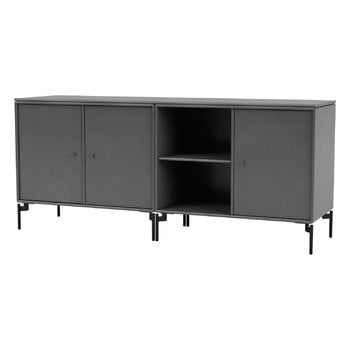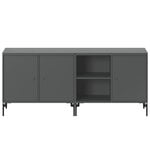Montana Furniture’s Save sideboard is a classic and simplistic storage unit consisting of three cabinets and two open shelves. The sleek metal legs give the sideboard an airy and elegant character.
The Save sideboard is a part of Montana Selection, a collection of storage furniture and interior objects characterized by a graphic, simplistic form language and crisp Nordic colours. The Montana products were created by Peter J. Lassen, and all the items have been designed and manufactured in Denmark.









